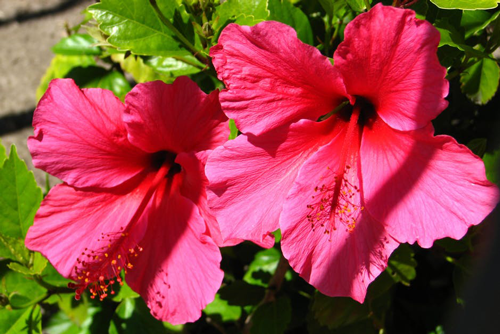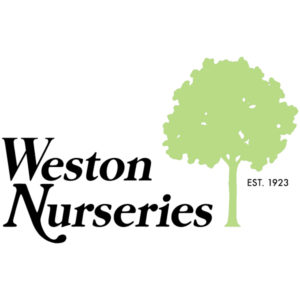“When words escape, flowers speak.”
Bruce W. Currie
You aren’t alone if this winter has left you dreaming of a tropical, sun-soaked getaway. Running away to an island to forget about the worries of daily life might not be a realistic long-term option for many of us, but it is very easy for us to bring a little slice of that paradise home. Hibiscus, with their ruffled flowers and stately stamens, can add an intoxicating exoticism to your home and garden.
There are three types of Hibiscus which you will commonly find in our Garden Center throughout the year, all of which are actually members of the Mallow plant family. Surprisingly, their luxurious look doesn’t have to come with a difficult care regimen, despite our tough New England climate. The truly tropical hibiscus varieties usually last for one season and are kept as annuals, replaced year after year. Within the same plant family there are also a woody shrub variety and a perennial type which can be established in your garden.
Tropical Hibiscus
Like any popular tropicals, Hibiscus rosa-sinensis are used to a certain lifestyle. They are native to Zones 9-11 and do not tolerate frost of any kind, preferring areas that pamper them with plenty of sunshine, heat, and humidity. This makes them perfect for a sunny deck or poolside patio in summer. They are known for their bold, warm-toned colors and dark green, glossy foliage with rich, exotic appeal. They look marvelous potted up on their own, or paired with annuals in a planted container. Their smaller 3-4” blooms are short-lived, dropping off after a day or two to make room for new ones.
Here in New England, tropical hibiscus are perfectly happy in a pot on your porch or deck, and can also be brought inside as houseplants (albeit finicky ones) in the winter. Usually they are thrown out or composted along with other annual flowers once the cold weather returns, but if you are feeling up to the challenge and have a sunny window and a humidifier, you can keep a tropical hibiscus year after year as an inside-outside plant.
We usually get a big shipment of tropical hibiscus in early May, along with mandevilla vine, dipladenia, and other tropical blooms. Perfect timing for planting up exotic patio pots!
Rose of Sharon
For those who are disheartened by the prospect of having to pamper or replace a tropical plant every year, Hibiscus syriacus is a godsend. As a tall woody shrub, they are much better adapted to our seasonal climates further North. They’ll be much hardier plants and will be able to handle seasonal changes, dips in temperature, and even drought. While tropical types might have bolder blooms, temperate varieties make it possible for anyone to bring home a Hibiscus.
Temperate Hibiscus grow best in Zones 5-8, but they can handle climates as extreme as 4 with some extra care. They offer a wide selection of colors but still have their iconic heart-shaped leaves, lighter in color than the tropicals, and beautiful flowers. You’ll find varieties with flowers that range from periwinkle blue to pink to lavender to white. Temperate varieties usually have single blooms that get up to 8” in size, which they drop occasionally to accommodate newer growth. These plants differ most from their tropical cousins in that they are deciduous, so their leaves will and their leaves will drop off in the fall, then begin growing again in the spring with the return of warmer, sunnier weather.
We usually begin stocking Rose of Sharon in the early summer, when they begin to produce their ruffled blooms.
Swamp Rose-Mallow
Despite its decidedly un-glamorous name, Swamp rose-mallow, or Hibiscus moscheutos, is a gorgeous perennial with massive blooms and foliage that ranges from soft green to bronze. In size, it is similar to a tropical hibiscus, thought it tends to grow a little more upright. This plant prefers full sun and well-drained soil, but will put up with less than perfect conditions. Bees, butterflies, and hummingbirds adore the big blooms and open stamen, so it’s a great choice to add to your pollinator garden.
We typically begin stocking Hibiscus moscheutos in the late spring and early summer, where it tends to steal the show next to all of the other perennials we sell!








